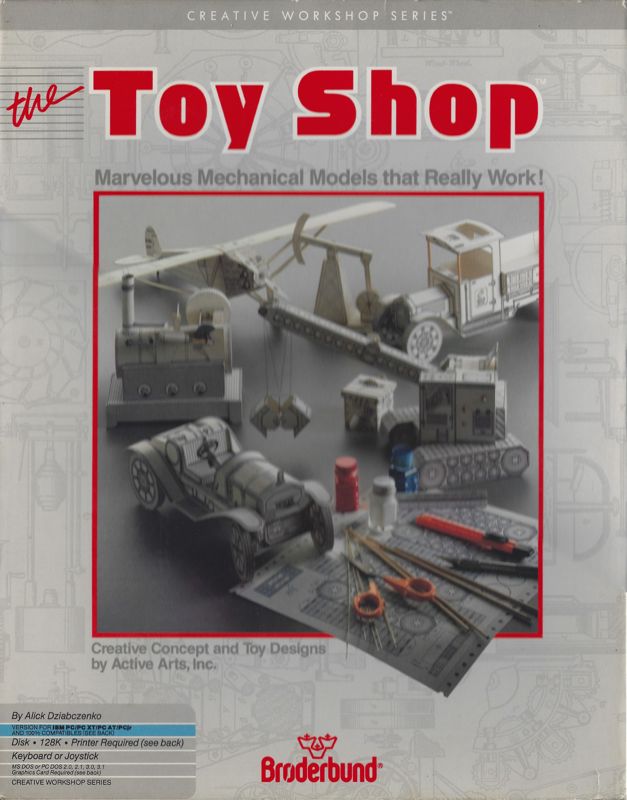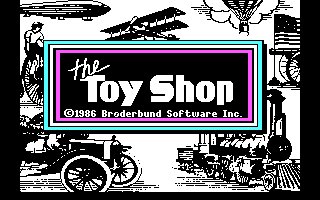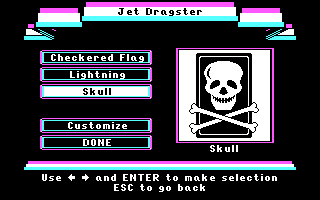Retro Replay Review
Gameplay
The core “gameplay” of The Toy Shop centers around hands-on construction rather than digital play. Upon launching the software, you’re greeted with a clean, intuitive interface that lists all 20 mechanical models by name and complexity. Selecting a model initiates a guided workflow: you choose your paper type, print the patterns, and then follow step-by-step assembly instructions. The process feels less like a chore and more like a rewarding puzzle, with progress indicators that tell you exactly which pieces to cut, fold, and glue next.
(HEY YOU!! We hope you enjoy! We try not to run ads. So basically, this is a very expensive hobby running this site. Please consider joining us for updates, forums, and more. Network w/ us to make some cash or friends while retro gaming, and you can win some free retro games for posting. Okay, carry on 👍)
Each model presents its own challenge. Simple vehicles like trucks and cars ease you into the process, while intricate builds—such as the penny-powered clockwork bank or the Spirit of St. Louis airplane—test your patience and dexterity. The instructions are detailed, with exploded-view diagrams showing exactly how every tab fits into its corresponding slot. If you’ve ever assembled a model kit or built with LEGO Technic, you’ll appreciate the same mix of trial, error, and aha moments that make each completed piece feel like a personal achievement.
The software’s organizational features enhance the building “gameplay.” You can mark models as “In Progress,” track your material usage, and export or print customized instruction sheets. For educators or group sessions, there’s even a batch-print option so multiple students can work simultaneously. Although there’s no multiplayer mode in the traditional sense, the shared experience of producing real, tactile models fosters collaboration in a way that purely digital titles can’t match.
Graphics
The Toy Shop’s on-screen graphics are functional rather than flashy. Models are presented as crisp vector drawings, which translate perfectly when printed on standard computer paper. Lines are sharp, and folds are clearly marked with distinct dotted or solid lines. Colors are optional—you can choose to print in full color for a polished look or in grayscale to save ink, and either way, the details remain legible.
Once assembled, the final models have a charming, hand-crafted aesthetic. The paper-on-cardstock construction gives each piece a subtle texture, harking back to vintage mechanical toys. Details like the carousel horses or the rubber-band-powered helicopter’s rotor blades come out with surprising precision. If you’re looking for jaw-dropping 3D graphics, you won’t find them here; but for a printed hobby kit, the visual fidelity is more than satisfactory.
Beyond the base patterns, The Toy Shop allows for customization. You can import your own artwork or tweak the existing designs in a basic vector editor, then print your alterations. This feature empowers creative users to add personal touches—perhaps themed decals for a truck or custom numbering on the sundial. The graphics engine may be minimalist, but its flexibility is a standout benefit for tinkerers and model-making enthusiasts.
Story
While The Toy Shop doesn’t feature a traditional narrative, it frames itself as a digital workshop where you play the role of an inventive craftsman. The software’s opening screen evokes an old-world atelier, complete with sketches pinned to a virtual corkboard. This subtle thematic touch encourages you to see each model not just as a toy, but as a miniaturized marvel of engineering.
There’s an educational undercurrent that ties all 20 models together. As you build an oil pump or a sundial, you’re inadvertently learning about mechanical principles and historical inventions. The inclusion of the Spirit of St. Louis airplane offers a nod to aviation history, while the balloon-powered locomotive demonstrates basic pneumatic physics. These real-world references imbue each project with a tiny narrative of its own: a journey back to the dawn of mechanical innovation.
For parents and teachers, the lack of a predefined storyline is actually an advantage. It invites youngsters to create their own backstories—imagining a fleet of cars racing across the living room floor or staging a miniature industrial site with the crane and oil pump. In this way, The Toy Shop becomes a blank canvas, inspiring freeform play and imaginative scenarios rather than dictating a linear plot.
Overall Experience
The Toy Shop offers a deeply satisfying blend of digital convenience and analog craft. From the moment you print your first sheet of patterns to the triumphant finale of a fully assembled carousel or clockwork bank, the sense of accomplishment is palpable. The learning curve is gentle enough for hobbyists and ambitious enough to keep seasoned builders engaged.
Material costs remain low—standard paper and cardstock are all you need, along with basic tools like scissors and glue. The software itself is a one-time purchase with unlimited prints, making it a cost-effective hobby compared to pricey resin kits or 3D printers. If you’re running a classroom or workshop, the ability to produce multiple copies quickly is a major plus, ensuring everyone can participate without wait times.
In an age of pixel-perfect graphics and endless online multiplayer, The Toy Shop stands out by offering a tangible end product you can hold, display, or gift. It’s an ideal gift for crafty adults, a hands-on STEM activity for children, or a creative diversion for anyone who misses the tactile satisfaction of building something with their own two hands. The overall experience is charming, rewarding, and delightfully old-fashioned in the best possible way.
 Retro Replay Retro Replay gaming reviews, news, emulation, geek stuff and more!
Retro Replay Retro Replay gaming reviews, news, emulation, geek stuff and more!









Reviews
There are no reviews yet.